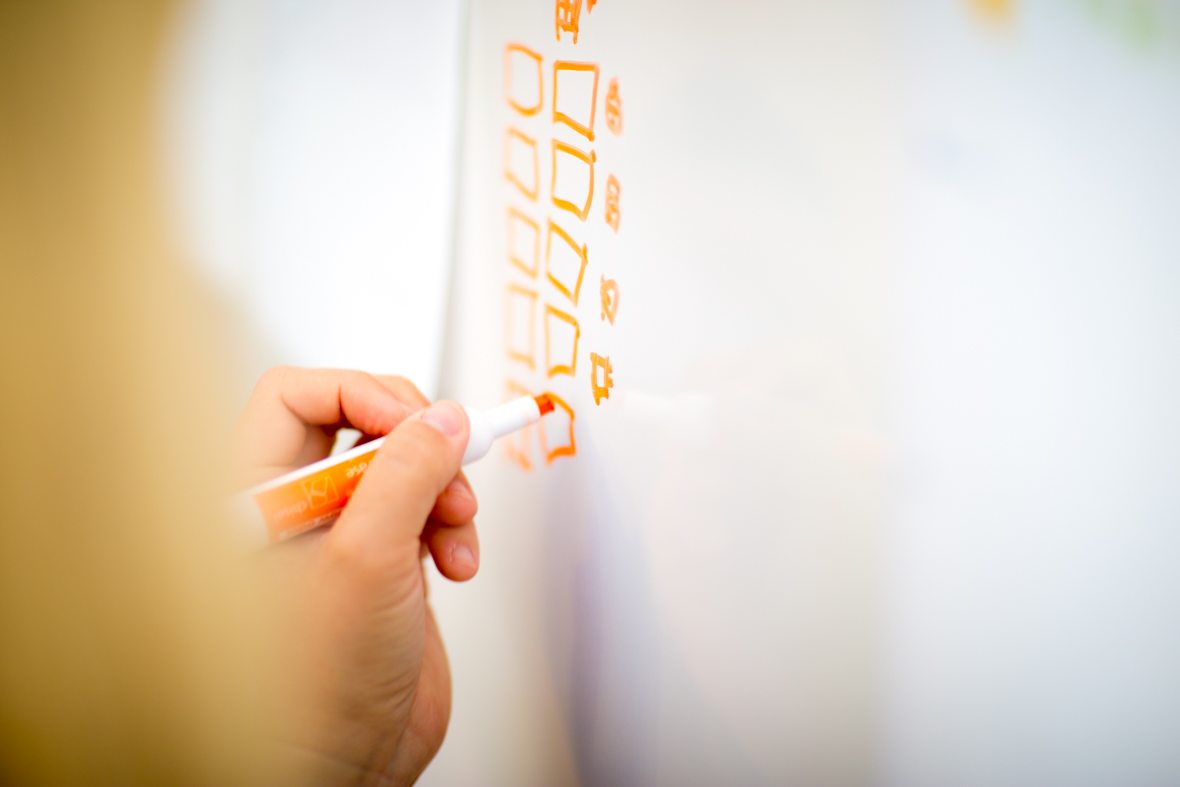Consulting can be hectic. Working with a huge variety of languages, frameworks, devices, and humans is an amazing and invigorating way to spend the day, but keeping all of the relationships, interfaces, and syntaxes straight can be a tall order.
Over the last few years, I’ve tried a slew of task management strategies to stay productive and sane at work. MindNode and OmniFocus are two that stuck. Here’s why:
h2. My Personal Whiteboard: MindNode
Every morning, when I sit down at my desk, I want easy access to a short stack of tasks to complete and a blank canvas where I can sketch out ideas, notes, and diagrams of the systems I’m working with. I’ve tried keeping this amalgam in a notebook but found it stifling. Every mark I made on the page would just sit there, immoveable and unchanging. If I wanted to reorganize things, forget it.
For a while, I used index cards. They worked better than the notebook. I could rearrange and shuffle cards around easily enough, but keeping my thoughts on paper was at odds with my backup practices.
A whiteboard seemed like the perfect solution. Easy to write on, easy to erase, with plenty of open space in a form that’s hard to lose. But hogging a whole wall of the office for days at a time wasn’t exactly a great way to win friends. Then I remembered a little app I’d tried in college.
During one of my especially minimalist semesters, I’d started taking lecture notes with one of the early mind-mapping apps on iOS, “MindNode”:https://mindnode.com/. Its infinite canvas and friendly UI made keeping up with most classes pretty easy. I’d thumb-type my way through the lecture at around 40 words per minute on an iPod touch, building up an outline and rearranging sections as I understood them better. Remembering how well it worked back then, I grabbed the Mac version and tried it out at work.
It’s gotten even better. MindNode lets me get notes out of my head and onto a canvas quickly without the finality of paper or the publicity of a whiteboard. Especially when I’m working with a new tech stack, making a map of the connections between individual components is one of the fastest ways I’ve found to help me think through a thorny debugging session or plan out new functionality. And because its canvas can hold any organized list, MindNode also helps me keep my head on straight throughout the day, letting me stay focused on what I’m doing without lugging around a box of notecards.
h2. The Magical Box that “Goes Ding When There’s Stuff”:https://youtu.be/8LqmAQwHNA0: OmniFocus
Everything I have to do that I can’t do right now goes into my OmniFocus inbox. Blog posts, follow-up conversations, oil changes, books to read—everything. When I have time, I file each task into a project and context (if it fits into any), add a due date (if it has one), and then fill in my very favorite field: the defer date. This little date field and the feature it exposes make OmniFocus the to-do list that best fits my life right now.
Without a solid task list, I tend, rather unfortunately, to ruminate on things that I can’t work on at the moment, distracting myself from the task at hand, or forget about them entirely. Over the years, I’ve tried a number of strategies to get tasks out of my head, where they aren’t safe, and into a storage system I can rely on. But each of them ended up failing under the weight of enthusiasm.
I would throw a few tasks into an app or a site and use it for a while, thinking all was well. Then I’d wake up one day to a monstrous list of tasks that looked nothing like what I actually had to do that day. Oh sure, I could sort things by due date to make the most urgent tasks stand out, but I was still staring at a huge list every morning and feeling more than a little overwhelmed even on the days when my actual task list was:
# Put on pants
# Walk the dog
# Watch Netflix
As I consigned more and more of my someday-maybe tasks to each system, it got harder and harder to find the pretty-soon, for-sure tasks. Over time, I’d lose trust in the system, checking it less and less frequently. Inevitably, I’d miss something actually important, declare the system a dud and start over. And then I tried “OmniFocus”:https://www.omnigroup.com/omnifocus/.
The tiny addition of a defer date has completely changed my relationship with a task list. Because it isn’t cluttered with things that I don’t need to care about yet, the list that I check every morning is pretty short, usually no more than a handful of tasks. And because it’s so short, I check it every day. And because I check it every day, I can defer tasks for my future self with 100% reliability. And because I have complete confidence that Future Me will get the message on time, I can relegate more and more of my routine to “the magical box on my wrist”:http://www.apple.com/watch/ that buzzes when I have to do something.
h2. Conclusion
With MindNode and OmniFocus, I ruminate less and trust my task management system to remember the things I need to do. I focus more of my time and energy on the people around me and the task at hand and, as a consequence, I’m more productive at work and at home.


Do you make a new mindnode doc every day with a variety of information, or do you just sort them by category.
I usually treat my daily MindNode documents more like a kitchen counter than a file cabinet. Sometimes one will accumulate stuff for a few days, but I always go through and clean it out eventually. Anything I need to save finds a home elsewhere in my system.